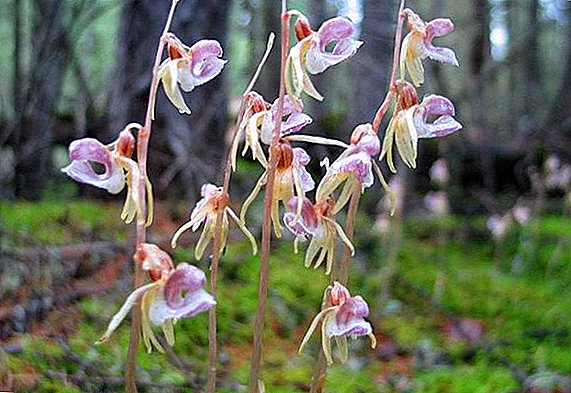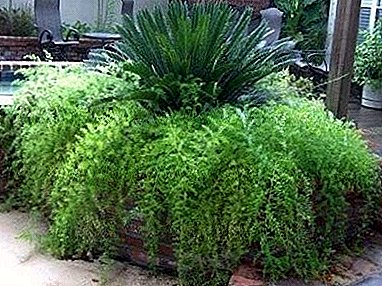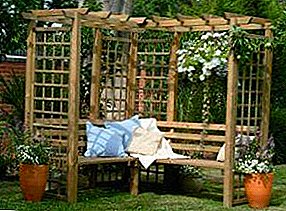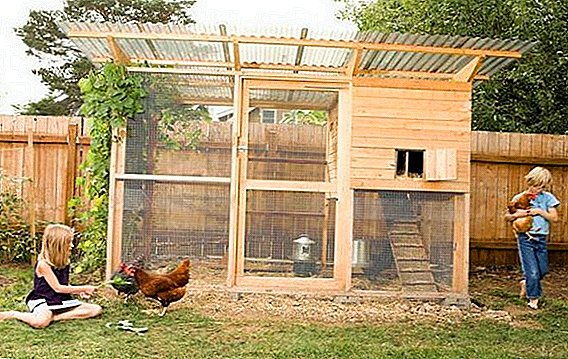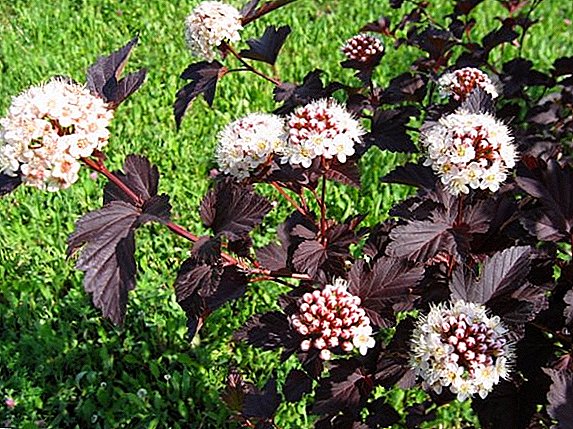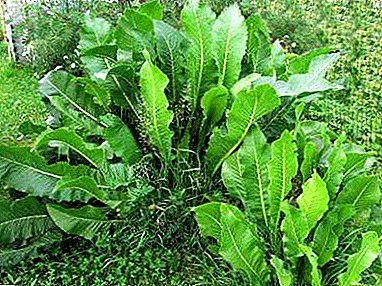
Before talking about growing horseradish in the garden, I want to immediately touch on the consequences. Grow horseradish on the site - the task is not for every summer resident. The fact is that horseradish is unpretentious, but as soon as it appears on the site, pushing it out of there is not so easy.
Horseradish spreads at the speed of a forest fire and captures all the free space in the garden. However, there are ways to cultivate this “reckless” plant.
We will talk about them later in the article. You will learn where horseradish grows, as well as all about the reproduction and cultivation of this plant.
How to grow?
Horseradish, in principle, grows easily in any soil, but if you want to get a juicy root, then you need to plant it in a light and warm soil that is rich in humus. You can fertilize with manure, compost and mineral complexes, as well as other root crops.
The purpose of planting and growing horseradish is to grow a well-developed, smooth, thick and straight root. This is only possible when growing horseradish in an annual crop.
For planting choose pieces of root length 30-40 cm (root cuttings). The roots need to be cooked in the fall, or buy in the spring before planting.
 Put horseradish in April.
Put horseradish in April.
- Cuttings before planting wipe with a damp cloth, removing sleeping eyes - this is necessary so that the root does not branch.
- Planted roots in the hole 10 centimeters in depth at a distance of 50-60 centimeters from each other. You need to plant at an angle, so that the upper part of the root is immersed by 5 cm, and the lower - by 10 cm. At the lower part, horseradish will start a new root system.
Differences from other vegetables
The most important difference is its “autonomous mode”. Horseradish grows and multiplies itself, the main thing is to let it settle down. You do not need to take care or water on a timer, the main thing is not to allow disease and time to eliminate pests. This is a kind of weed that is very resistant to all weather conditions.
How to choose the right grade?
It is necessary to make sure that the variety fits the type of planting and the soil, coincides with the planting season and the level of humidity. Also pay attention to the incompatibility of plants, as discussed below.
Where to locate and what is next?
If in most cases the restrictions are a minus, in this case - a big plus, because they will not allow the hell to spread to closed areas. We need to choose plants that also impede the growth of other crops.eg garlic, ivy.
It will be rather strange to see ivy in the garden next to a vegetable garden, nevertheless, such a “live fence” will allow to keep the planned boundaries of the site with horseradish.
Friends of horseradish:
- cucumber;
- bow;
- garlic;
- cabbage;
- parsley;
- dill;
- zavel.
Enemies:
- tomatoes;
- potatoes;
- pepper;
- beans;
- balazhans;
- zucchini.
When to land?
At home
In principle, it does not matter what time of year to plant horseradish at home, unless the “garden” is on the balcony or in another cold place. Arrange a pot with a plant in a neutral place where there is not a lot of light or temperature drops.
In the garden in the country
Like other plants, horseradish sow in the springso as not to disrupt the natural life cycle. Horseradish must also prepare for winter by shifting all energy supply systems closer to the soil in order to retain more heat and water in winter.
Step by Step Seed Growing Instructions
Planting seeds will be in the spring. To do this, choose not a hot, not rainy day, it is desirable that the soil was dried.
Houses
- First you need to choose a neutral soil and prepare all fertilizers.
- Pour drainage to the bottom of the pot.
- Stir the soil with fertilizer.
- Dig a small (3 cm hole under the seeds).
- Bury the seeds and pack a little.
- Put in a cool dry place.
In the open ground
There are several important aspects to consider before planting a plant.
 The best choice would be a site where nothing has grown over the past few years. This may be the corner or edge of the plot. If this does not work, then plant a plant with such crops that die early.
The best choice would be a site where nothing has grown over the past few years. This may be the corner or edge of the plot. If this does not work, then plant a plant with such crops that die early.- It is better to choose the most fertile piece of soil. In a place where the earth is clay and rammed, the plants will be dry and very hard. Also before planting it is better to fertilize the plot, dig it up and water it. Only in this case the ground will be completely ready.
- Lighting should be good. Horseradish easily transfers strong heat and scorching sun.
This is where the requirements end. The main thing is not to touch horseradish, then he will grow strong and will give a lot of harvest. If you mess with it, as with a handwritten bag, horseradish will be weak and, perhaps, will not suffer the winter.
Landing in spring
Horseradish cuttings are prepared in the fall during harvest and kept in the basement or cellar in dry sand or sawdust.
- One and a half to two weeks before planting, the roots are pulled out of the cellar and kept in a warm place, covered with a damp cloth. As soon as buds sprout, horseradish can be planted.
- Before planting, lateral processes up to 25 cm long and up to 12 mm in diameter are removed
- Long cuttings are cut into pieces, making the upper cut horizontal, and the lower - obliquely, after which they are planted on the bed. Density is approximately 4-6 cuttings per square meter, between the beds you need to retreat 50-60 centimeters.
How to breed?
How to spread horseradish, can it be propagated in the garden with sprouts or cuttings?
Horseradish propagated by root cuttingswhose length is 15-20 centimeters, and the thickness is 1-1.5 centimeters. Plant best in early spring. In places of industrial growth of horseradish, it is not cared for in any way, only in time they dig in and loosen the ground before planting. Under normal conditions, insects and wind spread the seeds and plant remains over short distances, so sometimes horseradish travels not only by land, through the root system.
What are the mistakes and how to overcome them?
The most common mistake - planting horseradish near plants, as it will take away their nutrients. Also, mistakes can be attributed to excessive care and an attempt to manually cultivate the plant. In the wild, it takes its place between ordinary plants and stronger, "dominant" cultures. Also, the cause of crop failure can be called poor surface preparation.
Many, considering that horseradish is a wild plant, do not even clean the corner or the outskirts of the garden from various kinds of garbage (including domestic waste), and decomposing polymers will harm any plant. Also, do not water the plant too often, otherwise it will simply sink in the water and the roots will not come into close contact with the ground.
Harvesting and storage
 Horseradish leaves begin to collect in August - they are used as a spice in pickling cucumbers, tomatoes and other vegetables. Try not to cut all the leaves from one plant, since their absence will not allow the root to grow further. Cut the leaves at a height of about 10-15 cm from the ground level in the area, so as not to damage the young leaves and the upper bud.
Horseradish leaves begin to collect in August - they are used as a spice in pickling cucumbers, tomatoes and other vegetables. Try not to cut all the leaves from one plant, since their absence will not allow the root to grow further. Cut the leaves at a height of about 10-15 cm from the ground level in the area, so as not to damage the young leaves and the upper bud.
Mass harvesting of fruits begins in the third decade of October or early November, before the onset of frost, when the leaves of horseradish have already turned yellow and began to dry out. If you planted large cuttings, then the harvest of horseradish falls on the year of planting, if the cuttings were small, then good roots will grow only next year. Before harvesting, the leaves of horseradish will be cut, the root will be dripped under the root and removed. Try not to leave even the smallest roots in the soil, because by the next year there will be no free space on the site.
Diseases and pests
Horseradish disease is extremely resistant, unlike other cultures. In extreme conditions and poor care, white rot, bel, verticillus and mosaic can infect it. Of pests for horseradish dangerous cruciferous flea, rapeseed bugs and tsvetoedy, cabbage bugs and willows. Diseases can also be transmitted from neighboring cultures, which means that they should also be checked in the process of diagnostic bypass.
How to save?
Viral diseases are not treated, so the plants that struck the mosaic will have to be thrown out. Regarding whites and white rot: these are fungal diseases, the causative agents of which can be eradicated at the primary stage of development of the disease by treatment with drugs that contain copper - Bordeaux mixture, copper sulfate, "Oxyhom", "Tiovit", "Jet" and others.
In the fight against insect pests, agrotechnical methods are used (respect for crop rotation, weed control, removal of plant residues and deep processing of the site after harvest), as well as the treatment of plants with insecticides - Aktellik and Foxim in the case of flea and bedbugs, Tsimbush, Eithos or Zolon in the case of tsvetkoedom and ognevka.
The last treatment of horseradish with chemical preparations is carried out no later than three weeks before harvesting.
Care and prevention of various problems
To avoid problems, you need to follow the algorithms for selecting and planting seeds., to diagnose and inspect plants, in the event of infection, immediately isolate the diseased individual, until it has infected the entire population. These simple rules will help you grow a great seasoning for pickling preserves and just a delicious salad ingredient.
Summing up, you need to express the main idea - the horse-radish can grow by itself, all that is required of the gardener is to start this process and not interfere with what is intended by nature. We hope that our article will help you quickly and without any special difficulties to organize the planting of this plant on your site, and the harvest will delight you and envy your neighbors in the dacha.


 The best choice would be a site where nothing has grown over the past few years. This may be the corner or edge of the plot. If this does not work, then plant a plant with such crops that die early.
The best choice would be a site where nothing has grown over the past few years. This may be the corner or edge of the plot. If this does not work, then plant a plant with such crops that die early.
